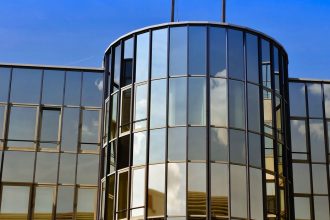In recent years, the urgency of climate change has prompted a paradigm shift in the way we approach architecture and urban development. A significant part of this transformation is evident in the rise of LEED-certified (Leadership in Energy and Environmental Design) buildings and sustainable real estate development practices. These innovations usher in a commitment to minimizing environmental impact while enhancing occupant health and well-being. This post explores the many benefits of LEED certification, innovative green building practices, and initiatives such as the Living Building Challenge that motivate us toward a more sustainable future.
The Essence of LEED Certification
LEED is a globally recognized certification program developed by the U.S. Green Building Council (USGBC) aimed at promoting sustainable building practices. It offers a framework for healthy, efficient, and cost-saving green buildings. The benefits of LEED-certified buildings include:
-
Environmental Benefits: LEED buildings significantly reduce energy consumption and carbon emissions, promote water conservation through efficient use, and improve indoor air quality. For example, studies show that LEED-certified buildings can use 25-30% less energy than conventional buildings (USGBC).
-
Economic Advantages: While the upfront costs of LEED-certified buildings can be higher, the long-term savings are compelling. According to the World Green Building Council, green buildings can result in operational savings of up to 20%, enhancing property value and reducing expenses related to utilities and maintenance.
-
Enhanced Quality of Life: LEED certification not only prioritizes environmental factors but also emphasizes human health. LEED buildings improve occupant productivity and comfort through better ventilation, natural lighting, and non-toxic materials. Research supports the link between green buildings and increased productivity, indicating that employees in such environments reported 15% higher productivity levels (Cleveland State University).
- Market Demand: A growing number of consumers, tenants, and investors are seeking out sustainable options. A survey by CBRE found that 87% of respondents deemed sustainability an essential factor in their real estate decision-making. Therefore, property owners and developers are increasingly recognizing the market advantages of LEED certification in attracting tenants and investors.
Innovative Practices in Green Building Design
As the demand for sustainable structures skyrockets, innovative practices in green building design continue to evolve. Some highlightable practices include:
-
Passive House Standards: This approach minimizes energy needs by optimizing natural resources like sunlight and wind. Key features include super-insulation, airtightness, and advanced ventilation systems designed to reduce energy consumption by up to 90%, compared to traditional construction methods.
-
Green Roofs and Living Walls: These installations significantly enhance biodiversity and improve building insulation. They help to reduce the urban heat island effect while managing stormwater runoff, thus contributing positive ecological outcomes.
-
Water Harvesting and Conservation: Innovative water fixtures, greywater recycling systems, and rainwater harvesting can significantly decrease water usage. For example, the Bullitt Center in Seattle features a rainwater collection system that eliminates the need for municipal water by capturing and treating stormwater.
- Building Information Modeling (BIM): Thanks to BIM, architects and construction teams can visualize and analyze building designs with a comprehensive digital model, optimizing energy efficiency and resource management before construction begins.
The Living Building Challenge: A Model for the Future
Pioneered by the International Living Future Institute, the Living Building Challenge (LBC) takes sustainability a step further, requiring buildings to produce more energy than they consume over the course of a year. Key principles of the LBC include:
-
Siting: The challenge emphasizes the importance of site selection, ensuring buildings do not disrupt ecologically sensitive areas and promote local biodiversity.
-
Water: Projects must achieve net-positive water use through responsible water management and conservation strategies.
-
Energy: Buildings are required to generate energy through on-site renewable resources, leveraging technologies such as solar panels and wind power.
-
Materials: The LBC uses a "Red List" of harmful materials that must be avoided in construction; thus, promoting the use of non-toxic, sustainable materials.
- Beauty and Inspiration: The LBC encourages designs that enhance the human experience, igniting a connection between people and the natural environment.
Conclusion: Charting a Sustainable Path Forward
As we stand at a critical juncture with climate change and urbanization, the value of LEED-certified buildings and sustainable architecture can no longer be overlooked. Innovations in green building design are not mere trends but essential practices that help foster resilience in our environments. By embracing sustainable real estate development and initiatives like the Living Building Challenge, we can create spaces that are not only environmentally responsible but also deeply attuned to the needs of their inhabitants.
As we dream of a greener future, it is essential to translate our ambitions into actions that lead to sustainable living, proving that the fusion of ecological responsibility and human comfort is not merely a dream—it can be our reality. Whether as developers, tenants, or simply engaged citizens, each of us can play a role in fostering these transformative practices. The journey toward a healthier planet begins with our commitment to sustainable building practices today.







